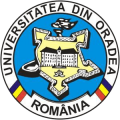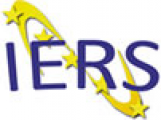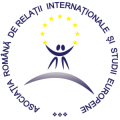The fluid character of European Union’s internal and external borders, as an effect of globalization, has revealed more and more the role and position of regions and regional systems in the context of a European discourse of endogenous development. Thus, the region is no longer treated only as a territorial unit with well-defined historical and cultural characteristics, but it aspires to a role of an alternative functional structure (unlimited by state borders), which is semi-independent from an economic point of view, redefined from an identity point of view, attractive for investors and for highly trained work force. The evolution of these types of territorial units is built both on classical theories of endogenous regional development, as well as on alternative ones. Thus, concepts which are based on economic growth (the most popular of the theories) – growth poles, clusters, innovation networks or the core and peripheries model – are complemented by alternative development concepts, which underline the importance of social development, the role of local communities and their activities in regional progress. Also, the socio-economic space that has been created includes ecological and cultural dimensions in a territorial unit in which man acts as an active creator of his environment and not as a passive receptor.
Besides the Western regions, those from Central and Eastern Europe, the implementing of regional policy vary widely from decentralization and creation of regional governments independent and strong (Poland and Czech Republic) to the delegation of administrative responsibilities to regional office (Romania, Hungary, Bulgaria). In all cases migration of persons and labour force, politic and economic diversity and ethno-religious realities increase the complexity of the context within which must be insured the rising of living standards and wellbeing. European development mechanisms and instruments involving multiple interactions between non-state actors designed to help create a stable regions, secure and predictable prerequisites for increasing the attractiveness and competitiveness of the area. For the border regions, where issues related to the center-periphery relation are acute, challenges and vulnerabilities are higher, but how are build inter-regional dialogue and cultural pluralism can be a concrete convergence model.
The common research activity which will be developed by the three members of the project has an interdisciplinary character, given that the expertise of these and the use of greater methodological plurality which ranges from statistical methods to interpretative research.
General objective: assessment of socio-economic development of regions of the joint Romanian-Hungarian border in the context of the European policies and strategies
Specific objectives
- Determine the level of structural instruments implementation in the border regions;
- Identifying the role of the institutional actors and endogenous factors and determiners in development of these regions;
– Analysis of border transformation from barrier to regional economic growth engine
Methodology
In order to accomplish the research objectives, the following approach will be settled:
- Research visits at the EU research centres and academic libraries, aiming to enrich the bibliography of the courses which specialized books, scientific articles, other materials and documents and to achieve knowledge.
- Participation at national and international conferences, roundtables, debates, for exchange information, ideas, teaching experience and to disseminate research’s results.
- Purchasing books and equipment (laptop).
The research team will proceed to a review of the theoretical framework of the main regional development theories and a review of the national and European studies with regard to the border regions (history background, cultural identity, economic issues, political context, social context, etc.
To achieve these objectives will be used quantitative research methods, qualitative or mixed in order to collect relevant data for the research area. Data will be collected from primary and secondary sources (public official documents, numerical or non-numerical, databases, media, other research results in the field published in studies or articles, websites of European institutions and international organizations, websites of cross-border cooperation programmes etc.) identified in the research area – border regions from CEE countries.
The research activity will be held during the entire three-year implementation period of the project and it is structured in the following activities:
- Establishing the theoretical model and conceptual delimitation
- Collecting data, data analysis and results interpretation
dissemination of the research results through articles and studies published in journals indexed in international databases
Reasearch
Participation at international events:
- ”Europe a Century after the End of the First World War (1918 – 2018)” – conference, Oct. 2018, Oradea, Romania.Works presented: The Central and Eastern Europe and its contribution to the European Order after the First WorldWar. Economic Aspects (L. Șoproni); University of Oradea, actor in Cross-border Cooperation at the Romanian –Hungarian Border (F. Chirodea); University of Oradea – Pol of Knowledge in Cross-border Cooperation (C. Țoca)
- ”EU Eastern Borders: Attitudes – Approaches – Agendas” – JM roundtable, Nov. 2018, Debrecen, Hungary. Workspresented: Development indicators for the border regions (F. Chirodea); Regional economic development (L.Șoproni); Three decades of cross-border co-operation along the Romanian-Hungarian border (1990-2018) (C. Țoca)
- ”CBC in EU member States: theoretical Studies and Best Practice” – roundtable, May 2019, Oradea, Romania.Works presented: Cross-border region branding – tool for differentiation and positioning in regional competition (L.Șoproni), Methods of Evaluation in the CBC (C. Țoca); European Union and its neighbourhood. Network for enhancingEU’s actorness in the eastern borderlands – ENACTED (F. Chirodea)
- ”II International Scientific Congress. Smart Society 2019” – conference, April 2019, Czestochowa, Poland. Workspresented: The border cities branding. Case study – Oradea (L. Șoproni with F. Chirodea); Development of border regionthrough the cross-border cooperation instruments (C. Țoca)
- ”A Call for Tolerance in the EU” – JM conference, Oradea, June 2019, Romania. Works presented: Access toEuropean funds for minorities on both sides of the Romanian-Hungarian border (F. Chirodea with L. Șoproni);Xenophobia – in the Moldovian press. Behavioural analysis on the phenomenon of xenophobia in the Republic ofMoldova (C. Țoca)
- ”Regional Development at the Borders of the European Union” – JM conference, Oradea, November 2019, Romania. Works presented: The Competitive Agglomeration, Pole of Economic Growth (L. Șoproni); Monocentric administrative units, polycentric border areas? A look at the Bihor – Hajdú-Bihar Euro-region (F. Chirodea with C. Chiriac); Evaluation of the regions at the Romanian – Hungarian border (C. Țoca)
- The 8th International Scientific Conference “Space, Society, Politics” Dedicated to the 15th Anniversary of the Faculty of Social and Political Sciences, Ivane Javakhishvili Tbilisi State University, 25-27 June 2020, Tbilisi. Works presented: Cross-Border Cooperation under Magnifying Glass: An Assessment of the Projects Implemented at the Romanian-Hungarian Border in the 2004-2013 Period (C. Țoca with E. Meszaros)
- ”EU and its Eurosphere The Eastern and the Southern Sides”, International conference, March 2020, Rabat, Maroc. Works presented: Cross-border cooperation – a tool of europeanisation of CEECs (C. Țoca)
Published articles and studies:
- L. Șoproni (with A. Stoica), The Central and Eastern Europe and its contribution to the European Order after the First World War. Economic Aspects, in Ioan Horga, Alina Stoica (eds.), ”Europe a Century after the End of the First World War (1918 – 2018)”, Romanian Academy Publishing House, 2018
- F. Chirodea, University of Oradea, Actor in Cross-border Cooperation at the Romanian – Hungarian Border (2000-2018), in Eurolimes, no. 27-28/2019
- C.Țoca, University of Oradea – Pol of Knowledge in Cross-border Cooperation (1990-2018), in “Eurolimes”, no. 27-28/2019
- L. Șoproni, The role of the Border Regions in the Regional Development. The case of Northern Transylvania Region, in “Eurolimes”, no. 27-28/2019
- C. Țoca (with Klara Czimre), Cross-border Co-operation Tendering: Actors and Activities (Focus: Hungary-Romania Crossborder Co-operation Programme 2007-2013), in Haruța C, Hințea C, Moldovan O (editors), “Sustainable Development and Resilience of Local Communities and Public Sector Organizations”, Accent Publishing House, 2019, Cluj-Napoca
- C. Țoca (with E. Meszaros), The Eu s multifaceted approach to resilience building in the Eastern Neighbourhood. Security sector reform in Ukraine, in “Eastern Journal of European Studies”, vol. 11/2020, Special Issues





